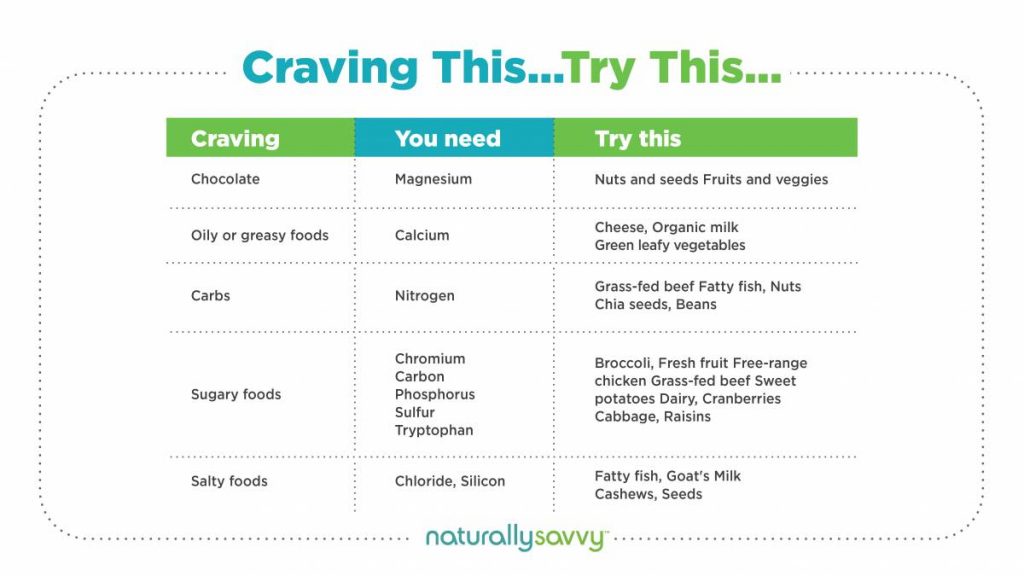
Perhaps you have an uncontrollable urge to eat chocolate, pretzels, Italian bread and butter, French fries, or macaroni and cheese. Have you ever wondered why you crave these or other certain foods? Not all experts agree on the answer, and there is likely more than one.
The brain is definitely involved in food cravings; in fact, three areas are believed to be involved: the hippocampus, caudate, and insula. These regions are activated when we crave certain foods.
Research has uncovered some interesting things about food cravings. For example, restrained eating or dieting usually increases the chances you will crave certain foods while fasting makes those intense desires diminish. According to a study on this topic, “attempted restriction or deprivation of a particular food is associated with an increase in craving for the unavailable food,” yet “fasting makes craving, like hunger, diminish”.
Read about how to curb food cravings
Therefore, the roots of food cravings are not as simple as one might think. Instead, there is likely a “variety of underlying cognitive, conditioning and emotional processes” at work. For example, many women experience various food cravings during the week before menstruation. Males and females of all ages may have cravings associated with stress in their lives or, according to naturopathic physician Tori Hudson, ND, cravings can arise from eating the Standard American Diet (SAD), because it is based on nutritionally-depleted, processed foods and individuals suffer from a form of malnutrition, which can trigger cravings for nutrients the body lacks.

To expand on this line of thinking further, some experts have established a correlation between specific food cravings, the nutrients that craving individuals actually need, and the foods that can help them fulfill those needs. That said, here is a list of some common food cravings, the nutrients you need, and the foods that can provide them. Bear in mind, however, that not everyone agrees with this concept. According to Karen Ansel, MS, RD, CDN, “If cravings were an indicator of nutritional deficiency, we’d all crave fruits and vegetables.”
As you can see from the following list of common food cravings, fruits and vegetables aren’t on the list. However, the concept that food cravings are related to nutritional deficiencies is worth exploring and even experimenting with if you find one or more of your craved items on this list.
Read about how food cravings could be sexual desire in disguise
Bread and/or pasta. You need nitrogen. Get it from high-protein foods such as legumes, nuts, seeds, lean organic meat.
Carbonated drinks/soda. You need calcium. Get it from green leafy vegetables, organic milk and cheese, sesame seeds.
Chocolate. You need magnesium. Get it from raw nuts, seeds, and legumes.
Coffee and tea. You need phosphorous and sulfur. Get phosphorous from organic beef or chicken, as well as nuts. Get sulfur from cruciferous vegetables, garlic, and red peppers.
Fried and/or oily foods. You need calcium. Get it from green leafy vegetables, organic milk and cheese, sesame seeds.
Salty foods. You need chloride and silicon. Get them from fatty fish, nuts, and seeds.
Sugary foods. You need carbon, chromium, magnesium, phosphorous, sulfur, tryptophan. Get carbon from fresh fruit. Get chromium from broccoli, organic cheese or chicken, grapes. Get magnesium from fruits and vegetables, nuts, and seeds. Get phosphorous from vegetables, grains, nuts, organic dairy, eggs, chicken, or beef. Get sulfur from cruciferous vegetables and cranberries. Get tryptophan from organic cheese, raisins, spinach, and sweet potatoes.
| Craving | Nutrient | Eat More of These |
| Bread and Pasta | Nitrogen | legumes, nuts, seeds, lean organic meat |
| Carbonated Drinks/Soda | Calcium | green leafy vegetables, organic milk and cheese, sesame seeds |
| Chocolate | Magnesium | raw nuts, seeds, and legumes |
| Coffee/Tea | Phosphorous | organic beef or chicken, as well as nuts |
| Sulfur | cruciferous vegetables, garlic, and red peppers | |
| Fried and/or oily food | Calcium | green leafy vegetables, organic milk and cheese, sesame seeds |
| Salty foods | Chloride and Silicon | fatty fish, nuts, and seeds |
| Sugary foods | Carbon | fresh fruit |
| Chromium | broccoli, organic cheese or chicken, grapes | |
| Magnesium | fruits and vegetables, nuts, and seeds | |
| Phosphorous | vegetables, grains, nuts, organic dairy, eggs, chicken, or beef | |
| Sulfur | cruciferous vegetables and cranberries | |
| Tryptophan | organic cheese, raisins, spinach, and sweet potatoes | |
| NaturallySavvy.com |
Sources
Hill AJ. The psychology of food craving. Proceedings of the Nutrition Society 2007 May; 66(2): 277-85
Huffington Post. Do food cravings indicate nutritional deficiencies?
Nature Works Best. Food cravings
WebMD: The facts about food cravings




